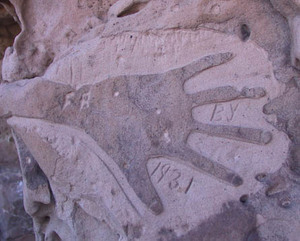Persistently windy locations can be a frustrating challenge for the home gardener. High winds cause broken limbs and leaf loss in many deciduous trees. However, many different species of evergreen trees are resistant to wind damage and flourish on wind swept sites. Evergreens offer vertical interest and year-around greenery in the landscape. Evergreen trees also provide food and habitat for birds and wildlife, provide shade and help prevent soil erosion. Wind resistant evergreens are well suited for privacy screen and windbreaks. Once established, native evergreens require little care or maintenance.
Junipers
Bay juniper (Juniperus horizontalis) and shore juniper (Juniperus conferta) are hardy evergreens that grows well on wind-scoured hillsides. There are more than 60 different species of juniper trees. Junipers are planted as ornamental landscape trees to add visual interest, stabilize soil and combat wind and water erosion. All types of juniper thrive in United States hardiness zones 3 to 9.
Cedar
Slow-growing bay cedar (Suriana maritime) thrives in U.S. hardiness zones 10b through 11b. The sturdy tree is tolerant of wind and salinity. The bay cedar grows best in a full sun location. Bay cedar is a widely used ornamental for planting on the leeward side of coastal properties. Wind tolerant western red cedar (Thuja plicata) grows well in U.S. hardiness zone 8.
Fir Trees
Able to withstand strong, consistent winds, noble fir thrives in U.S. hardiness zone 8.
Pines
Fern pine (Podocarpus gracilor) is a wind-resistant evergreen, suitable for animal habitat, privacy screening, windbreaks and fencing. The stately tree reaches a height of 60 feet and thrives in U.S. Hardines zones 10 and 11. Scotch Pine (Pinus sylvestris ) is widely cultivated for Christmas trees and planted for windbreaks in U.S. hardiness zone 8. Screw Pine (Pandanus utilis,) is another ornamental evergreen that tolerates aggressive wind and ocean spray in U.S. hardiness zones 10b and 11. Knob pine (Pinus attenuata,) Bishop pine (Pinus muricata) and Ponderosa (Pinus ponderosa) flourish in U.S. hardiness zones 8 to 11.
Cypress
Able to withstand strong coastal winds, Monterey cypress (Cupressus macrocarpa) grows well in U.S. hardiness zone 9. Native to California, Tecate Cypress (Cupressus forbesii) thrives in hot desert winds and strong coast gales. Gowen Cypress (Cupressus goveniana) emits a strong lemon scent and adds deep greenery to the home landscape.
Laurel
Bay laurel (Laurus nobilis) is a slow-growing evergreen that tolerates windy locations and partial shade. Bay laurel trees teach 25 to 35 feet in height and grow well in U.S. hardiness zones 8 through 11.
Flowering Evergreen Trees
Silk tassle (Garrya elliptica) is a hardy ornamental small tree, suitable for landscaping windy locations. Native to California, the robust evergreen tree is prized for its profuse blooming catkins. The catkins bloom in the middle of winter, adding an unexpected display of color. The tree does well at altitudes from sea level to 1200 feet in U.S. hardiness zones 4 through 9. Pacific wax myrtle is another small tree that is an attractive evergreen, useful in home landscaping. These small trees lend themselves to mass plantings nd are useful in control erosion on wind blown hillsides.
Reference:
- Sustainable Trees And Shrubs: Introduction [www.uri.edu/ce/factsheets/sheets/sustman.pdf]
- Tree Link: Tree Zone [www.treelink.org/docs/zonemap.phtml]
- A California Friendly Guide to Native and Drought Tolerant Gardens [www.lvmwd.com/Modules/ShowDocument.aspx?documentid=711]





